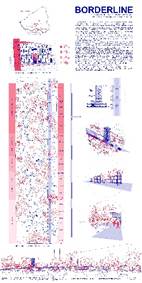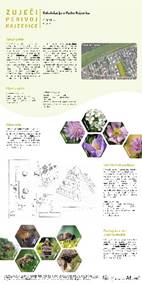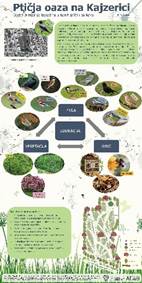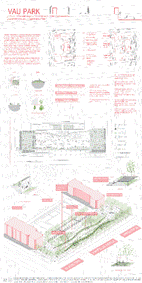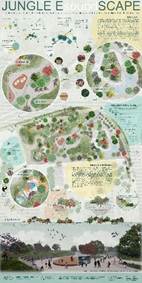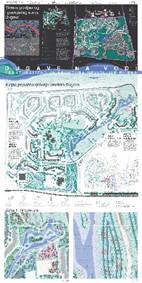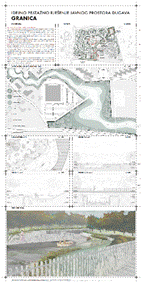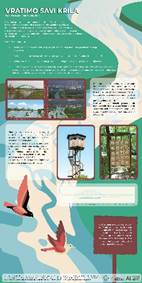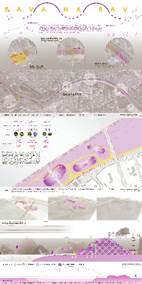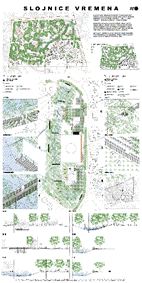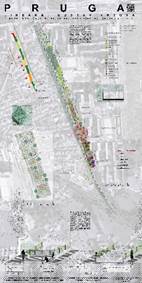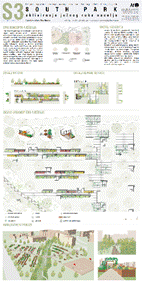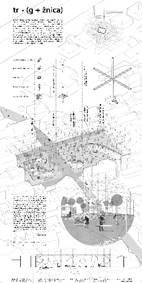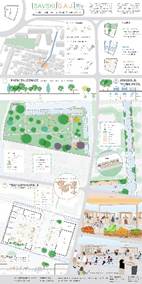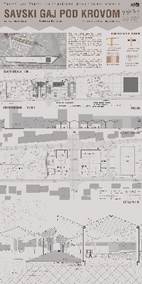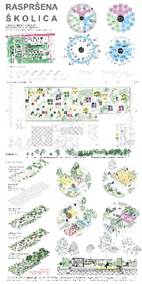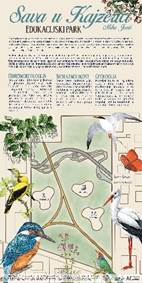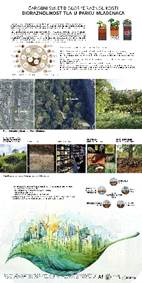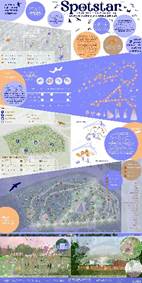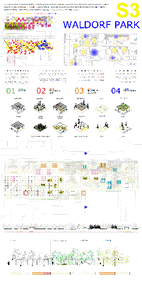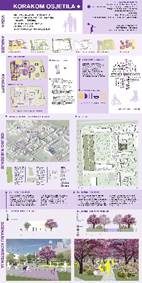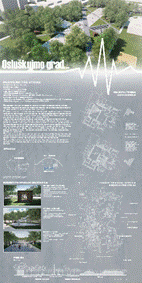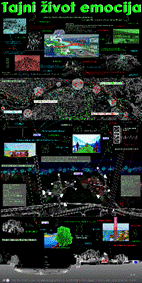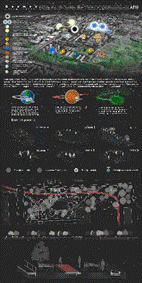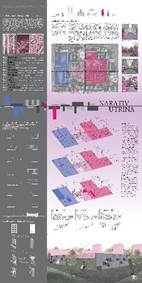Why do technological and engineering skills need to be integrated more intensively into learning and teaching?
|
Teaching (Today for) Tomorrow: Bridging the Gap between the Classroom and Reality 3rd International Scientific and Art Conference
|
|
|
|
| Section - Education for sustainable development | Paper number: 35 |
Category: |
Abstract |
|
|
|
Key words: |
|
|
Introduction
UNToday's reportedworld is confronted with numerous challenges that 57%ultimately manifest themselves in serious disruptions to the Earth's natural processes. The most obvious manifestation of this is climate change, which in turn destroys all other resources that sustain life on Earth. These disruptions are largely the result of inappropriate human behaviour and inevitably affect human life and human society. Perhaps the biggest problem is the exploitation, administration and management of key natural resources such as oil, ores, water, agricultural land and forests, seas and oceans. Nevertheless, human society continues to count the consumption of natural capital as income and not as money extraction (Luttenberger, 2019), which speaks in favour of the world’sthesis population lives in urban areas and projectedthat the growthnature of thathumanity percentageitself requires a change in the consciousness of the moment in which we live. For this reason, sustainability, sustainable development and resilience have become a "mantra" to which there is no alternative if we want to survive on Earth in the long term. In this sense, the social-ecological resilience that we strive for until we achieve sustainability can be seen as the ability to adapt or transform under conditions where we are faced with unexpected changes in social-ecological systems to ensure the continued support of human well-being (Biggs et al. 2015 ; Folke et al., 2016). Therefore, we need to become aware of change and learn how to respond to multiple, long-term and future risks, how to adapt to them and what steps we need to take to change the systems that create risk, vulnerability and/or inequalities (UNCTAD,UN-ADB-UNDP, 2018). Awareness is the first, but perhaps the most important step in gradually making human society more resilient and geared towards sustainable, non-devastating development. At the same time, sustainability and sustainable development usually encompass three basic dimensions that people should care about: the environmental, economic and social dimensions (UNESCO, 2015). As these dimensions are often interpreted tendentiously, depending on which interest groups interpret them, institutional (political), cultural and technical dimensions are increasingly being added today (Purvis et al., 2019; Purković, 2024). Sustainable development can therefore be seen as the maintenance of productivity by replacing depleted resources with resources of equal or greater value without degrading or jeopardising natural biotic systems (Kahle and Gurel-Atay, 2014). In other words: We can only take as much "life" from the earth as we are prepared to give back to it. But is this possible under the given circumstances and in the way, we manage resources, produce and run the economy today? Most probably not. In fact, the results of all global action to date show that we have not made significant progress in terms of climate change impacts, biodiversity conservation and the sustainability of the human community (IPCC, 2022). It is therefore already clear today that the problems and challenges of sustainability will have to be solved by future generations, problems that we cannot yet clearly articulate and with technologies that we do not yet know (Purković, 2024). However, the question is whether future generations will have enough awareness, knowledge, wisdom and courage for the necessary changes if we do not sensitise them today and "equip" them with the necessary knowledge and skills, or whether they will continue to repeat the mistakes of their ancestors. For this reason, there is no alternative to education (and upbringing) for sustainable development today, but it should be given significantly more and significantly different attention than we do today. In this sense, technology and the development of technical skills cannot be excluded from this process. After all, technology has caused numerous consequences that have damaged the environment and sustainability, but without technology we will not be able to remedy these consequences or develop further.
The aim of this article is therefore to clarify and argue the importance and role of technology and technical (engineering) skills in education for sustainable development. The problems of implementing ESD in the school system are analysed and guidelines for the integration of ESD in primary education are presented. At the end, a concept for the implementation of ESD is proposed, in which the importance and role of technical-technological knowledge and skills is elaborated, as well as ways of implementation that would reduce the observed problems.
Starting points and implementation of education for sustainable development
Driven by the accelerated destruction of the natural environment, population growth and the associated growing needs, as well as scientific progress, the global community has agreed on 17 Sustainable Development Goals (UN, 2015). This has also led to recommendations to integrate the values of sustainability and sustainable development into all aspects of learning (UNESCO, 2005; UNESCO, 2009; UNESCO, 2012; UNESCO-DESD, 2014). For this reason, in most countries around the world, including Croatia, education for sustainable development (ESD) is in principle integrated into the entire education system (UNESCO-DESD, 2014). This education should be inclusive and interdisciplinary, and the young generation should develop abilities for observation, critical thinking, creativity, adaptability and skills for a good life where they live, but also the tools to build healthy and resilient communities (Robertson, 2017). It should therefore be quality education, as one of the seventeen Sustainable Development Goals, which should support all other goals (Laurie et al., 2016; Bell, 2016; Müller et al., 2021). It should aim at solving sustainability problems, which should always be approached critically and systematically so that individuals can see the problem as a whole and understand the meaning and interrelationships of the individual elements of this whole and act accordingly (Purković et al., 2023). This meansapproach requires an understanding of the whole system, but also an understanding of how things are interconnected (Sterling, 2001; Armstrong, 2005; Capra, 2005; Orr, 2014). From these definitions and expectations, it is clear that citiesthe integration, organisation and implementation of ESD in the school system can be very complex and full of numerous challenges and issues, some of which are highlighted here.
Problems with the implementation of ESD in the education system
The first problem that emerges from the analysis of the available sources is the problem of the organisation and actual implementation of ESD. For example, ESD is often implemented as maina urbancross-curricular areastopic arewithout becomingclear even more complex ecosystems and habitats. The challenges posed by increasing urbanization – ranging from environmental degradation to social inequality – demand innovative, integrated approaches to research and teachinginstructions (Rieckmann,Purković, 2018).2022), Addressingas theselessons issueson requiresthe initiative of a morefew extensivededicated application of multi-, inter-, and transdisciplinary methods, which can provide holistic solutions that span across disciplines and scalesteachers (ScholzMüller et al., 2006;2021); Lehmann,as 2010)a project or programme initiative without sufficient feedback on performance (Warner and Elser, 2015) or as an experimental school programme (UNESCO HK, 2015) in which not all students are involved. Although many countries have recently created clearer organisational concepts for the integration of ESD into the school system (Müller et al., 2021), it is evident that it is still not entirely clear how ESD is integrated into the school system and that, unless something changes, it will continue to be present only declaratively in the curricula (Purković, 2022).
TheAnother termsproblem multidisciplinary,is interdisciplinary,the identification of ecological literacy and transdisciplinaryeducation allfor describesustainable collaborativedevelopment. effortsIndeed, involvingthe multipleapproach disciplines,of yetlearning theyfor varysustainable indevelopment theiris scopenot only the development of environmental literacy (Orr, 1992), i.e. awareness of environmental protection (Tilbury and depthWortman 2008; Aguayo and Eames, 2017). Although ecology is important, ESD should also consider the social, political and technical-technological context of integration.causes Theseand conceptsconsequences arise(Purković fromet al., 2023). ESD must necessarily include the needdevelopment toof overcomeaction competences necessary for the artificial fragmentationimplementation of knowledge into distinct fields, but they do not carry the same meaningchange (Park & Son, 2010). The differences lie in how they influence the collaborationJensen and integrationSchnack of1997; expertiseJensen, from various disciplines, shaping the way professionals work together.
To clarify, the following definitions are commonly accepted:
• Multidisciplinarity refers to drawing knowledge from different disciplines, but each discipline retains its own boundaries. The disciplines work side by side, providing their perspectives on a common theme without significantly overlapping (NSERC, 2004).
• Interdisciplinarity goes a step further by analysing, synthesizing, and harmonizing links between disciplines to create a coordinated and coherent whole. It integrates the knowledge and methods of multiple disciplines to provide a more comprehensive understanding (CIHR, 2005).
• Transdisciplinarity transcends the boundaries of individual disciplines and integrates knowledge from the natural, social, and health sciences in a humanities context, aiming to solve complex, real-world problems through collaborative, holistic approaches (Soskolne, 2000).
These definitions can be understood as a spectrum, with multidisciplinarity representing the most basic level of integration, interdisciplinarity offering deeper connections and synthesis, and transdisciplinarity embodying the most advanced, holistic integration that involves active problem-solving through combined expertise.
Urbanization’s rapid pace,2002), especially in the context of globalstudents' environmentallives. changes,This callsmeans that much more than just preaching and teaching about sustainable development, i.e. sustainable development should also be practised (Müller et al., 2021). In other words, students need to learn how to investigate problems, critically assess what is good and what is bad, how to solve problems, how and towards whom to behave socially, but they also need to learn how to create/produce something, how to reuse or recycle something, how to repair something, how to grow something and how to responsibly manage the resources they use on a daily basis (water, food, energy, etc.). This requires their active participation in designing sustainable solutions or solving community problems in order to achieve transformative change towards resilience and sustainability (Sterling, 2001, 2010; Uzzell and Räthzel, 2009; Aguayo and Eames, 2017; Purković, 2022, 2024). It is not enough to simply clean up the environment or teach how people and the living world function.
The third problem observed is seemingly trivial and concerns the lack of direct information (and teaching) for astudents rethinking of how urban spaces are planned, managed, and inhabited. Atabout the sameSustainable time,Development theseGoals. challengesAlthough areit deeplyis interconnectedimportant withfor the achievementgeneral population to know the Sustainable Development Goals (Bain et al., 2019), most research only mentions the inclusion of the Sustainable Development Goals (SDGs),in particularlyESD, thoseand relatedit is not entirely clear whether students are directly introduced to sustainablethese citiesgoals. From the analysis of the Croatian primary school curriculum (Purković, 2022), it can be concluded that there is no such systematic introduction, but only certain goals are included in teaching through cross-curricular topics within the subject curricula. At the same time, there is no clear and communitiessystematic (SDGintegration 11),of climatethese actiongoals (SDGinto 13),the teaching process. Although this may seem unimportant, I think that the first step in education for sustainable development should be to familiarise students with the most important goals of sustainable development. In this way, students would not only be informed, but they should also have the opportunity to ask for additional explanations as to why certain goals are mentioned, why they are important and lifewhat their achievement contributes to.
The fourth problem is the problem of competent teachers. Research often shows that teachers need additional training to implement ESD (Müller et al., 2021), that they are not sufficiently motivated for ESD (Scherak and Rieckmann, 2022), that they do not have sufficient competences (Purković et al., 2023) or that they are not considered capable of implementing ESD (Vukobratović and Rončević, 2020). This is not unexpected considering the complexity of ESD and the problem of integrating it into the education system. Namely, teachers are expected to master competences based on landthree dimensions of learning: cognitive (SDGknowledge, 15)understanding, critical thinking), socio-emotional (Sachs,humanity, 2015;value Creutzigand responsibility, empathy, solidarity, respect) and behavioural (skills development) (EC, 2021). Although teachers in formal education often focus on the cognitive level, the socio-emotional and especially the behavioural dimension (transdisciplinarity) prove to be extremely important for the successful implementation of ESD (Corres et al., 2024).
TheThis integrationmeans ofthat biological,teachers ecological,should planning,develop urban,strategies that inspire hope and architecturalavoid knowledge is vitalpessimism in addressing the complex problems of urbanization, where sustainable, human-centred, and ecologically sound solutions must be co-createdstudents (ElmqvistCorres et al., 2013;2024), McPhearsonbut also skills for participation and action in their own environment and in collaboration with teachers and experts from other disciplines. However, despite numerous, more or less successful examples of teacher training for ESD, the lack of systematic training for educators is still conspicuous.
The fifth and perhaps most important point in terms of developing students' critical thinking and holistic knowledge is the interpretation of the dimensions of sustainable development and the framework of competences for sustainable development. As mentioned in the introductory chapter, ESD encompasses three dimensions: Environmental (ecological), Social and Economic. It follows from this definition that sustainability and sustainable development is also a cultural (cultural), traditional, linguistic, spiritual, political and national phenomenon, but also primarily an energy-ecological, economic and labour-social issue (Purković et al., 2018)2023). ThisIn interdisciplinaryother collaborationwords, these dimensions are often considered, learnt and taught separately from each other, without the component that is essentialoften intheir promoting"connective tissue", i.e. the well-beingbasis for understanding and action, namely engineering and technology. On the other hand, competences for sustainability include specific ways of bothliving humans(behaviour), ways of thinking and non-humanacting, speciesas inwell urbanas environmentsintegrated (Karaman,competences 2022). Urban parks, for example, are a critical component of green infrastructure that can support biodiversity, enhance resilienceneeded to climatesolve change, and provide social spaces that foster community engagementproblems (MA,QAA, 2005;2021; AhmedBunyan, Eleva,2024). 2019).
At the Universitysame time, the question arises as to whether it is possible to develop these without engineering (technical) and technological knowledge and skills. Of the 17 Sustainable Development Goals (UN, 2015), 14 are directly related to engineering and technology. For the achievement of Zagreb,certain Croatia,goals, thetechnology researchis therefore often a cause (reason), for certain goals a consequence and designfor projectsa developed by students embody this collaborative approach, merging insights from the Faculty of Science (Department of Biology) and the Faculty of Architecture (Department of Urban Planning, Spatial Planning and Landscape Architecture). These projects encourage students to tackle the multifaceted challenges of urbanization by drawing on the expertise of both fields. Since 2020, the collaborative efforts between the two faculties have been increasingly shaped by courses such as the elective Urban Ecology at the Faculty of Science, aslarge part of them a means to achieve, mitigate or maintain a certain or desired state of the Master’sdesired degreegoal. programAlthough technology has unfortunately very often caused numerous disruptions that have brought us to our current state, it cannot be responsible or "at fault" for this. The responsibility always lies with people, i.e. their behaviour patterns, strategies, policies and, above all, economic corporate interests. However, technology is still necessary to satisfy needs, to ensure the survival of human society and to overcome the challenges and problems of sustainability. Therefore, technological and engineering knowledge and skills are necessary for a real understanding of the cause-and-effect problems of sustainability, but also for appropriate action to solve the problem, so they should be an indispensable part of ESD. On the contrary, research in EnvironmentalCroatia Sciences,shows that engineering (technical) and Designtechnological Studioknowledge IIIand –skills Landscapeare Architectureonly amarginally compulsory course at Bachelor’s degree programincluded in Architecture and Urban Planning at the Faculty of Architecture.
The courses, held separately within the two faculties, have now evolved into a cohesive platformeducation for interdisciplinarysustainable anddevelopment transdisciplinary(Purković, research2022; andPurković teaching,et drivenal., by2023). the collaborative efforts of faculty members across both institutions. These courses reimagine urban public spaces in Zagreb as multi-functional community places that serve the needs of diverse living beings. Students engage with these real-world complexities through case studies that incorporate ecological, social, and design perspectives.
The aimreasons of this work is to present how students and teachers from the Faculty of Science and the Faculty of Architecture at the University of Zagreb collaborate to investigate the complexity of urban public spaces. Through this work, we aim to showcase the successful application of a multidisciplinary approach, evolving into an interdisciplinary and transdisciplinary one, and highlightwhy the importance of suchthis collaborationsknowledge inis addressingalso thenot urgent challenges of sustainable urban development.
Methods
Urban ecology and Design Studio III – Landscape Architecture courses: formative years of collaboration
The interdisciplinary collaboration at the University of Zagreb beganemphasised in the 2020/2021 academic year with the introductionexamples of theESD electivepractises coursefrom Urbanother, Ecologyespecially asEuropean, partcountries ofare thenot Master’sknown, degreealthough programmeESD inshould Environmentalbe Sciences at the Faculty of Science, Department of Biology. This course aimed to equip students with the skills to assess the impact of urbanization on ecosystems, propose strategies to mitigate its negative effects,realised and evaluatepromoted thethrough influencetechnical of global environmental changes on urban systems. The course culminates in a seminar paper, which may take the form of a grant application proposal. During its first year, the course adopted a multidisciplinary approach, incorporating subjects such as ecology, geophysics, hydrology, landscape architecture, environmental social scienceseducation (environmentalPavlova, economics),2013; Aguayo and energyEames, efficiency.
The Design Studio III – Landscape Architecture course is a required component of the undergraduate program (third year) in Architecture and Urban Planning. The course includes weekly workshops, with groups of 12-16 students led by a team of eight teachers from the Department of Urban Planning, Spatial Planning, and Landscape Architecture. The final student projects within this course are presented in two forms: a booklet and a poster. The booklet combines theoretical insights on public space and contemporary landscape architecture with documentation of the design process, including concept studies, models, and design variants. It tells the story of how the students' proposals evolved, encouraging them to appreciate the research and iterative nature of design. This comprehensive approach to project presentation not only showcases the final solution but emphasizes the process, fostering a research-oriented climate in the course.
Expansion of the collaborative teaching approach through students’ assignments and projects
From the 2021/2022 academic year onward, the collaboration between the two faculties and courses deepened, particularly through student assignments that merged the expertise of both faculties (coordinated by authors of this paper)2017). This phase saw the integration of urban design principles with biodiversity conservation, as students engaged in project-based learning focused on enhancing public spaces and improving the quality of life in Zagreb.
InBased students’on projects,the ecologicalproblems principles were blended with urban design strategies to propose innovative solutions for revitalizing public spaces (e.g., urban parks, squares, playgrounds, streetscapes, waterfronts, markets) in several neighbourhoodsdescribed in the southern partimplementation of ZagrebESD (Newin Zagrebthe area including neighbourhoods Zapruđe, Utrina, Travno, Dugave, Sopot, Siget, Trnsko, Savski gaj, Kajzerica, Lanište). These areas are characterized by fragmented public spaces, limited integrationeducation of naturestudents, withinit urbanis environments,not possible to expect the development of the expected competences for sustainability at a level that guarantees the actual solution of sustainability problems in the future. This can only result in students lacking holistic and growingsystematic concernsknowledge aboutand sustainability.awareness Moreover,of the neighbourhood’sproblems uniqueand combinationgoals of modernist residential blocks, expansive green spaces,sustainability and transportationfailing networksto providesdevelop anstudents' idealcritical settingthinking on these issues. At the same time, such tendencies favour the interests of large corporations and rich countries that have the material and human potential for reimaginingtransformation, urbanwhile spacessmall thatand integratepoor ecologicalcountries principlescan withhardly designexpect thinking.any strengthening of sustainability, resilience and sustainable development, which can be detrimental to their social and cultural survival (Purković, 2024).
Guidelines for the implementation of ESD in primary education
From the problems of education for sustainable development described above, it is relatively easy to conclude that integration into the education system should be guided by the following guidelines:
1. A clear framework and timeframe for the implementation of ESD - while the widespread concept of ESD to date has opened up the possibility for education systems to adapt to their own environment, it is not fully anchored in reality. It is therefore proposed that a separate subject, "Sustainable Development", be created to give this important area the importance it deserves. The interdisciplinarycurriculum natureof this subject should definitely be open in order to give each local community the opportunity to solve sustainability problems that are tangible for students and teachers. As part of such a curriculum, students should definitely be informed about the Sustainable Development Goals and relate them to the context of their own lives, but also to the context of the collaborationlocal becamecommunity especiallyand evidenteconomy. The competency framework of this curriculum can be modelled on existing solutions (QAA, 2021; Bunyan, 2024), but it can also be adapted to the strategic interests of a particular country or region.
2. Multidisciplinary approach to the realization of ESD – this education should go beyond the framework of "ecological indoctrination" (Purković et al., 2023) and provide students with different (multiple) interpretations of the goals, challenges, problems and possible solutions of sustainable development. In this sense, it is illusory to expect fully competent teachers in the mergingnear future, but all teachers whose specialty is related to the Sustainable Development Goals should participate in the implementation of studentESD. groupsIn this way, students will have the opportunity to learn about social, ecological and economic aspects, provided they are scientifically sound. At the same time, technical-technological knowledge is an indispensable segment required for a holistic view of sustainability and the development of students' critical thinking, so it should be much more integrated into this education. This approach to implementing ESD would promote mutual co-operation between teachers, which would reduce their mutual misunderstanding (and frequent underestimation) and alleviate the current problem of teachers' insufficient competence. In the context of this way of organizing and implementing ESD, support from the Urbanschool Ecologyand courseespecially atfrom the Facultyschool headmaster (Müller et al., 2021) is an extremely important predictor of Sciencesuccess.
3. "Transformative" activities of students in ESD - in the implementation of ESD it is very important to stimulate students to think, but also to provoke their action in solving sustainability issues and theproblems. DesignIn Studiothis IIIcontext, –to Landscapestimulate Architecturestudents courseto atthink and research, it is extremely important to give them an insight into the Facultymacro context of Architecture.the Thisoriginal collaborativereality modelso emphasizedthat they can recognize the importance and significance of combiningsustainability ecologicalissues knowledgeand withgoals. landscapeThis designsegment thinking,is encouragingmost often realized through teaching materials that are "anchored" in authentic representations of situations from the "real world", but also through direct insight into this reality. However, this is not enough to develop the expected competences. Therefore, students toshould work acrosson disciplines and develop holisticconcrete solutions for urban renewal and sustainability. By working together across faculties and disciplines, students learn to tackleproblems the complexities of urban transformation andthat contribute to the realization of sustainable,one inclusive,of the sustainability goals. Although the social and vibranteconomic dimension of such activities is important, the success of solutions at these levels is only possible after a "deep" understanding of the needs, processes and consequences that are in the background of achieving the Sustainable Development Goals (Purković, 2022). For most sustainability goals, this knowledge is technical-technological (technological and engineering) and often also economic, strategic or political, so that it is usually a "black box" for students, but also for educators. Since strategic and political knowledge is even more difficult for primary school students to grasp, they should be represented primarily at higher levels of education, while "visible" knowledge should occupy primary school students. For this reason, scientific, economic, but also technical-technological knowledge and engineering skills are extremely important for the realization of concrete solutions to problems, so that there is no alternative to students' technical activities if one wants to provoke transformative behavior and action of pupils. In this context, information and digital technology should be used primarily as a research means, insight into the macro-context or simulation of reality (Green et al., 2022), while the concrete student activities should be based on vital sustainability issues. These are primarily activities aimed at solving problems related to the production and cultivation of food, energy for heating and transport, housing, the production or recovery of necessary products, the management of drinking and industrial water, ensuring clean air and the environment (Purković, 2024), but also the preservation of natural biodiversity and urban spaces.habitats.
The guidelines presented are in no way intended to diminish the importance of cultural, linguistic, national, traditional or other socially important sustainability, which is particularly important for small nations and communities, but merely to emphasize the importance and significance of technical-technological knowledge and skills in education for sustainable development. At the same time, it is repeatedly pointed out that the neglect of technical (engineering) and technological knowledge and skills threatens the sustainability and resilience of small countries and peoples in the long term, but directly, and thus their national, linguistic, cultural and any other social sustainability. In other words, neglecting vital needs and sustainability solutions such as energy, production, resources (technical/technological) and over-reliance on corporate interests will certainly reduce the possibilities of achieving the desired social sustainability. Therefore, it is important to realize that solving the problems and issues of sustainability of a particular country cannot be solved now, all at once and forever, but starts with the education and training of the young generation, who must be educated to solve problems and challenges that we do not yet know. Today, the future of every country and nation depends on the quality of such education. So, we should ask ourselves what we are teaching them today and what skills we are "equipping" them with.
Project-basedIntegration teachingof technology and learningengineering in ESD
TheAlthough interdisciplinarythe approacharguments presented in ourthe workprevious chapters have made it clear why technological knowledge and technical (engineering) skills should be part of ESD, the question arises as to how they can be integrated into such education. To implement such knowledge and skills, the Concept for Demystifying Technology (CDT) (Purković, 2024) was used here, which provides a broad framework for such integration (Figure 1). This is implementedbecause, throughunlike the usual concepts related to technical-technological education, whose implementation in teaching practice is often limited to the system of knowledge of a blendparticular discipline, this concept gets out of lectures,such practical exercises,frames and collaborativelimitations. studentIn projects.other Corewords, according to this concept, engineering and guesttechnology lecturersare provide"demystified" as needed, i.e. they are activated according to the meaning and importance associated with a "deep" understanding or solution of sustainability problems.
According to this concept, all learning and teaching should begin by familiarizing students with crucialthe knowledgeneeds inwe urbanhave ecology,as landscapehuman architecture,beings on a daily basis, but also with the needs of society and urbanthe planningeconomy principles,that enablingensure themthe maintenance of a certain standard or range of civilization. At the same time, it is important to understand the broader contexts in which these fields intersect. Practical exercises help students apply this theoretical knowledge to real-world scenarios, fostering dynamic group discussions with experts and guest critics. These interactions promote critical thinking, collaboration, and interdisciplinary problem-solving as students explore the intersection of biodiversity conservation, urban development, and public space design.
The project-based structure of the courses encouragessensitize students to takethe ownershipneeds of theirnature, learningi.e. (Guothe etconditions al.,that 2020)must bybe workingmet for life on actual urban interventions. They present their work through seminar papers, research projects, and oral presentations, which further enhance collaborative learning, peer feedback, and knowledge exchange. Joint public exhibitions are organizedearth to showcaserun studentsmoothly. projectsThe to the local community, offering a platform for engagement and feedback on proposed urban interventions. This participatory aspect highlights the importancesuccess of community input, ensuring that student proposals are grounded in local needs and realities.
Student assignments are organized in a series (cycles/set/sequence), where in consecutive academic year the focus is shifted on different sites but relating to a common urban context. For instance, the assignments within the New Zagreb neighbourhoods serve as a case study throughout the course, with each year focusing on different areas. Students work in pairs, developing their teamwork skills, and select a site from a set of proposed locations to develop their project proposal.
Over the past three academic years (2020/2021 to 2023/2024), teaching methodology has evolved through the integration of multidisciplinary lectures and mentoring, alongside participatory efforts to involve local communities in the project development process. The overarching theme for student assignments during this period has been “Rethinking and (Re)Designing Open Public Spaces in New Zagreb”. Each academic year focused on a different part of New Zagreb, with the spatial focus shifting to four different neighbourhoods each time.
As visible from Fig. 1, in the first year, the focus was on New Zagreb East, where four neighbourhoods – Zapruđe, Utrina, Travno, and Dugave – were considered for the wider context, with students selecting specific sites for their project design. For the Urban Ecology students, the Dugave area was chosen. In the second year, the focus shifted to New Zagreb South, where six sites were selected by the teaching team from over ten areas proposed by local communities. Urban Ecology students worked on a project in Park Mladenaca in Trnsko. Finally, the third year focused on the western part of New Zagreb, with seven sites offered for selection. Urban Ecology students could choose from two sites: the Sava area and the Kajzerica area.
New Zagreb as a living urban laboratory for teaching and learning
The New Zagreb area, located south of the Sava River, developed in the second half of the 20th century and is a significant example of modernist and post-modernist urban planning (Laszowski, 1994; Mlinar & Klasić, 2021). This unique urban context serves as a valuable teaching and learning ground,will offeringbe measured to some extent by the range and depth of questions students theare opportunityprepared to exploreask, as these are often the evolutionbeginnings of citiesthe problems of sustainability and sustainable development from which students' research, thinking and hypothesizing to solve the problem starts. The integration of technical-technological knowledge begins only in the 20thpart centuryrelated to the economy and the material needs of people (water, food, energy, products...), while addressing current urban challenges. Students critically engage with the area’sneeds historyof nature and contextother throughneeds research,of discussions,people (spiritual and interdisciplinary collaboration, ensuring their designsothers) are responsiveprobably to both historical legacies and contemporary needs.
The assignments throughout the course were structured as a series that collectively examined New Zagreb’s urban landscape from various perspectives. This approach followed a clear spatial and thematic logic, aligned with the city’s urban planning context. Each year, students focused on different parts of the New Zagreb area (Figure 1), workingconsidered within the followingframework thematicof frameworks:
• Heritage Revitalization – New Zagreb East (2021/2022): The theme focused on enhancingsciences and supportinghumanistic modernistknowledge. urbanFor heritage.this Studentsreason, re-analyzedcooperation and proposeda designjoint solutionsapproach forbetween neighbourhoodsteachers suchfrom asdifferent Zapruđe,subjects Utrina,and/or Travno,fields is necessary, because "man does not live by bread and Dugave,water aimingalone", tobut preserveis thepart modernistof characternature whileand addressingmust contemporary urban needs.
• Community Spaces – New Zagreb South (2022/2023): This year’s theme revolved around creating spaces for the community. Students designed urban interventionslive in areas where neighbourhoods were planning new uses, such as Utrina, Sopot, Siget, and Trnsko. The emphasis was on participatory design, involving local communities in the planning process to ensure that their needs and priorities were reflected in the proposals.
• Slash City – New Zagreb West (2023/2024): The theme in the final year focused on mediating diverse spatial boundaries and finding solutions for public urban systems in morphologically heterogeneous areas, including Trnsko, Savski Gaj, Kajzerica, and Lanište. Students were taskedharmony with addressing the challenges posed by the varied and complex urban fabric of these neighbourhoods.it.
TheFigure selection of sites and the development of assignments were carried out in close collaboration with local communities. This participatory process involved multiple conversations with residents about the challenges and opportunities within their public spaces, ensuring that the proposed changes were deeply rooted in the needs and aspirations of the people who live there.1
The Concept for Demystifying Technology (CDT) in ESD (Purković, 2024)
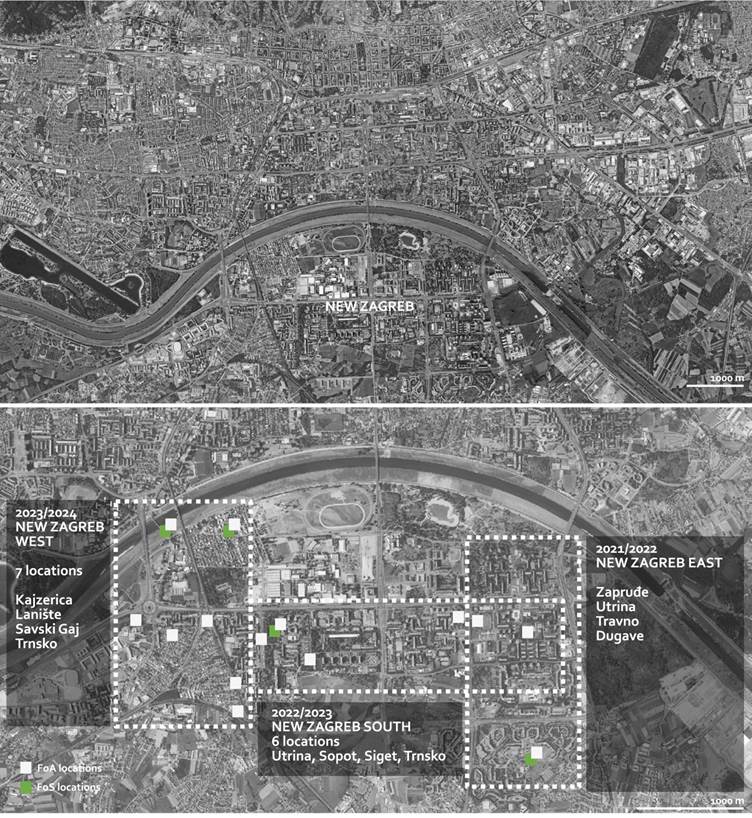
Figure 1
Site locations of student projects assignments from 2021 until 2024 as part of the courses Design Studio III – Landscape Architecture (Faculty of Architecture, FoA) and Urban Ecology (Faculty of Science, FoS)
Student semester structure and organisation: multidisciplinary thematic blocks
The teaching and design/research process in the courses is structured into three thematic blocks (Table 1), each lasting approximately one month during the semester. This structure combines lectures, seminars, workshops, and exhibitions, organized into the following phases:
• Preparatory phase: This initial stage involves meetings with teachers and local communities to define the semester assignment and select locations aligned with the needs of the communities.
• First block: The semester begins with introductory lectures and a guided tour of the selected locations, accompanied by local community members. This provides students with valuable context and insights into the urban challenges they will address.
• Second block: This phase includes research seminars and design studio workshops, where students collaborate with mentors and engage in multidisciplinary lectures. The focus is on developing students' design ideas and exploring diverse approaches to public spaces. Students also review previous project proposals through exhibitions of past student work, which serves as a source of inspiration.
• Third block: The final block involves the culmination of the student projects, including final presentations and critiques from guest critics. Students present their work through posters, which are showcased in a final exhibition. This phase emphasizes the importance of critical feedback and refinement of ideas.
• Post-semester activities: After the semester concludes, students participate in round tables, presentations at fairs, and public exhibitions to promote and disseminate the results of their work. These activities allow students to engage with the broader community and share their findings.
Each block is introduced by a multidisciplinary set of lectures designed to connect various perspectives, including those of designers, architects, biologists, and sociologists. These lectures are also integrated at the end of the semester as guest critiques, fostering an environment of continuous exchange between practice and academia. The interdisciplinary approach further encourages resilience through collaborative learning, and the reciprocal relationship between research and practice creates a dynamic space for experimentation.
Each year, the student projects are showcased in exhibitions that foster discussion and reflection. These exhibitions serve as responsive, interactive platforms, drawing participation from students, mentors, local communities, museums, and the Zagreb Society of Architects (DAZ).
Table 1
Structure and organisation of student semester in multidisciplinary thematic blocks
|
|
|
|
|
|
|
|
|
|
|
|
|
|
|
|
|
|
|
|
|
|
|
|
|
|
|
|
|
|
Notes: FoS – Faculty of Science, FoA – Faculty of Architecture, UE – Urban Ecology course, DS – Design Studio III – Landscape Architecture
Results
This section presents the outcomes of student projects from the Urban Ecology and Design Studio III - Landscape Architecture courses, which were conducted through a collaborative teaching effort between the Faculty of Science, Department of Biology, and the Faculty of Architecture, Department of Urban Planning, Spatial Planning, and Landscape Architecture at the University of Zagreb, Croatia. Over a period of three years (2021–2024), students engaged in a series of lectures, workshops, and seminars aimed at fostering synergies between urban ecology and urban planning. The projects focused on the development of new open public spaces in selected districts of New Zagreb, Croatia, and demonstrated how integrating landscape design with ecological solutions can enhance the quality of urban life while promoting sustainability. In the 2020/2021 academic year, the collaboration also involved students from the School of Design programme at the Faculty of Architecture (courses Visual Communication 4 and Industrial Design 6). In the 2022/2023 academic year, Agronomy students from the Faculty of Agriculture joined as well with courses from both undergraduate and master studies of the Landscape architecture programme (courses Urban Landscape Design and Studio 1 – Landscape Design). However, since these students participated only partially in the New Zagreb assignments series, their projects are not included in the results of this work. The following results highlight the diverse approaches and innovative solutions that emerged from the interdisciplinary collaboration between Faculty of Science and Faculty of Architecture.
Student projects: achieving learning outcomes through project proposals, posters, and seminars
The multidisciplinary teaching approach resulted in a wide range of complex and diverse project proposals, as evidenced by Tables 2 and 3. The teaching and research methods evolved in response to the unique spatial contexts of different parts of New Zagreb, where varying public space challenges required tailored design methods and planning strategies. Over the course of three academic years, a total of 180 project proposals were developed, accompanied by 160 posters, 153 booklets, and 13 seminars (Table 2).
Table 2
Overview of student assignments (2021–2024) under the thematic series 'Rethinking and (Re)Designing Open Public Spaces in New Zagreb Area“
|
|
|
|
|
|
|
|
| |
|
|
|
| |
|
|
|
| |
|
|
|
| |
|
|
|
| |
|
|
|
| |
|
|
|
| |
|
|
|
| |
|
|
|
| |
Notes: * Students selected one neighbourhood out of four as their wider context for project proposal, and specific site within the chosen neighbourhood; FoS – Faculty of Science, FoA – Faculty of Architecture, FoAgr – Faculty of Agronomy; UE – Urban Ecology course, DS – Design Studio III: Landscape Architecture
The studentintegration projectsof consistentlytechnical-technological addressedknowledge severalalso recurringtakes themesplace through a "deep" insight into the resources, capacities and conceptslimits centralwithin which certain problems can be solved. Only then are they researched, considered and suitable technologies deployed that do justice to urbanthe ecology,solutions. asIf outlinedthe in"real" Tableproblems 3.are These included:
• Cohabitation between peopleidentified and nature:well Manydefined proposalsat emphasizedthe fosteringbeginning aof harmoniouslearning relationshipand betweenteaching, peoplemost of the processes related to sources, resources and the naturalchoice world.and Projectsapplication focusedof technique and technology should be the product of collaborative research, planning and organization by the students and the realization of a project or problem solution. The teacher should primarily play the role of facilitator, using their knowledge and skills to facilitate the students' work and guide them to success. Depending on promotingthe biodiversity,problem encouragingto localbe communitysolved participation,or the project carried out, the results of such activities can be various social initiatives, actions or multimedia presentations of solutions to problems, but it is much more useful for the overall development of students if, in addition to everything else, there are also "tangible" solutions, i.e. products created during student activities. In this way, students can already recognize from their own experience some of the consequences of technology and technical activities, some of which are positive and some negative. Since the part relating to sources and resources in the first part (insight), the part relating to technological processes, but also the part relating to the consequences of technology can hardly be learnt entirely through experience, it is important in these segments to carry out the previously described activities "anchored" in authentic situations (anchored learning). Whenever possible, professional field trips and field experiments should be carried out with the students, as a direct insight into the application and consequences of technology can be an excellent stimulus for the students' activities. Only after the learning experiences described above can students explore, consider, propose and present options and solutions that can reduce the negative impacts of technology and ensure sustainability. In this part, the collaboration of teachers from different subjects and their joint participation in these activities should be emphasized once again. Students should research, consider and present sustainable solutions from a social, humanistic, scientific, economic and technological perspective. The teacher's engagement with these "multiple manifestations" of students would also contribute to their cognitive flexibility and professional development.
Despite the fact that the importance of technological and engineering knowledge and skills is emphasized here, the humanistic approach to education for sustainable development should remain at the forefront. For this reason, the ESD curriculum should be free from dictated, pre-defined or politically correct "truths" that are not uncommon in the interpretation of goals and ways to achieve sustainability. Students should therefore be encouraged to criticize anything they feel should be criticized and the development or change in their thinking, behavior and actions should be based solely on their own experiences and not on the imposition of the "right' way to think or act. Teachers involved in this training should also move away from emphasizing the cognitive approach, where they need to know everything in order to teach it to students, as this is not actually possible and is often detrimental to students' development. Today's knowledge is very fluid and is quickly updated so that the teacher can systematically monitor and adopt it. Although the teacher's knowledge is not unimportant, it is more important to develop students' cognitive mechanisms and critical thinking through their own research, experimentation, argumentation and proof. At the same time, it is more important to develop students' skills in using technical tools and technology, coping skills, co-operation and communication, which will enhance their metacognition, awareness and conscience. For this reason, teachers should invest more effort in researching possible problems and systematizing knowledge and creating spacesmaterials forfrom pets,which enhancingstudents research and learn information, and less in learning systematic knowledge from a particular discipline on their own. When it comes to the ecological balance within urban environments.
• Renaturalisation: A significant portionproblems of thesustainability projectsand addressedsustainable development, and especially the renaturalisationuse of various urban elements, such as forests, canals,technology and fields.its Theseconsequences, projectsthe teacher should be careful when using IT technology. The information that can be obtained is often incorporatedof water-sensitivedubious approachesvalue, sometimes skillfully manipulated to emphasize only what certain interest groups want. In this way, public opinion and nature-baseddesired solutionsbehavior toare restoreinfluenced natural ecosystems withinand the urbanreal fabric.
•often Urbanremains gardenshidden andin foodthe systems:background. NumerousFor proposalsthis focusedreason, teachers should focus more on the development of urban gardens, which contributed to local foodenvironment productionthey know, where they can see the real truth, and distribution.work Thismore themeon also included the creation of urban markets, integrating ecological design with sustainable food systems.
• Educational parksempathy and centres:guiding Projectsstudents' also explored the creation of educational parksconcrete and centrespractical thatmultidisciplinary serveactivities. asOf learningcourse, hubsthis for all community members. These spaces aim to promote environmental education, sustainability, and community engagement through hands-on, interactive experiences.
• Contemplative places and healing gardens with topics of synaesthesia and holistic planning: Multiple projects promote the holistic approach to public spaces and urban landscape that (equally) develop the body, mind, and soul of man by evoking senses, perceptions, and meanings of urban nature. Thus, raising well-being, the quality of living, and the quality of the urban environment involves equally raising awareness of natural resources and values as well as developing collective consciousness.
Importantly, the student projects often went beyondrequires a singleradical theme,change addressingin multiple interconnected topics. This interdisciplinary approach reflected the complexity of urban ecosystems, where solutions to one issue frequently contribute to addressing several others. This holistic perspective ensured that the final proposals not only tackled specific challengesapproaches, but also contributedin tothe broader,planning, preparation, organization and implementation of such teaching, which can only be achieved through long-term goalspractice forof sustainablesuch urbanteaching development.practice and cannot be learned beforehand.
Table 3
Project topics with representative posters
One possible solution to this problem is to establish ESD as a subject in its own right, based on the concept of demystifying technology, which in many areas determines the problems and challenges of sustainability. This subject should be taught jointly by different teachers who interpret and present sustainability from different perspectives. At the same time, the implementation of problem and project activities in which selected sustainability problems are solved in the community should be a central part of this teaching. At the same time, this requires a more intensive integration of engineering and technological knowledge and skills into such activities, which puts the teachers of this field in the foreground, but also requires a fundamentally different approach to teaching. The knowledge and skills that should emerge from ESD are not only social, economic, environmental, scientific and therefore not only technological (and engineering). They should form a unique whole that makes the student a critical thinker who knows what should be changed and is aware of the ways and paths that can contribute to it. This requires new competences from all teachers involved that go beyond the scope of the disciplines in which they are "buried" today and that could be developed through mutual collaboration. Despite all societal efforts and endeavors, it is clear that without a new economic platform that puts today's market competition and economy to the test, and without the development of technologies that enable the gradual realization of sustainability goals, there will be no real progress in their implementation. Partial ecological actions and successes are laudable, but they are only a small step that will not save the world in the long run. That is why we need to raise generations today who think differently, who look at the world critically (and not populistically) in economic and social terms, but who are technologically literate enough to know what is feasible and what is not, and who therefore recognize the most important problems that need to be addressed in the future.
References
Aguayo, C. | study
| Int
|
|
|
|
|
|
|
|
|
|
|
|
|
|
|
https://doi.org/10.1007/s11159-017-9685-7
Armstrong, J. (2005). En’owkin: Decision making as if the sustainability mattered. In M. Stone, & Z. Barlow (Eds.), Ecological literacy: Educating our children for a sustainable world (pp. 11–17). San Francisco: Sierra Club Books.
Bain,
P.ProjectG., proposalsKroonenberg, developedP. byM., studentsJohansson, andL. mentorsO. combineet theory and research which is part of the analytical first block of the semesteral. (Figure 2A – left top collage of books), development of urban planning system of landscape public spaces with programmatic schemes during the conceptual second semestral block (Figure 2B – left bottom zoning), and elaboration of projects through plans, sections, details and /or models during the design phase in the third (last) block of the semester (Figure 2C – right plan and section)2019).
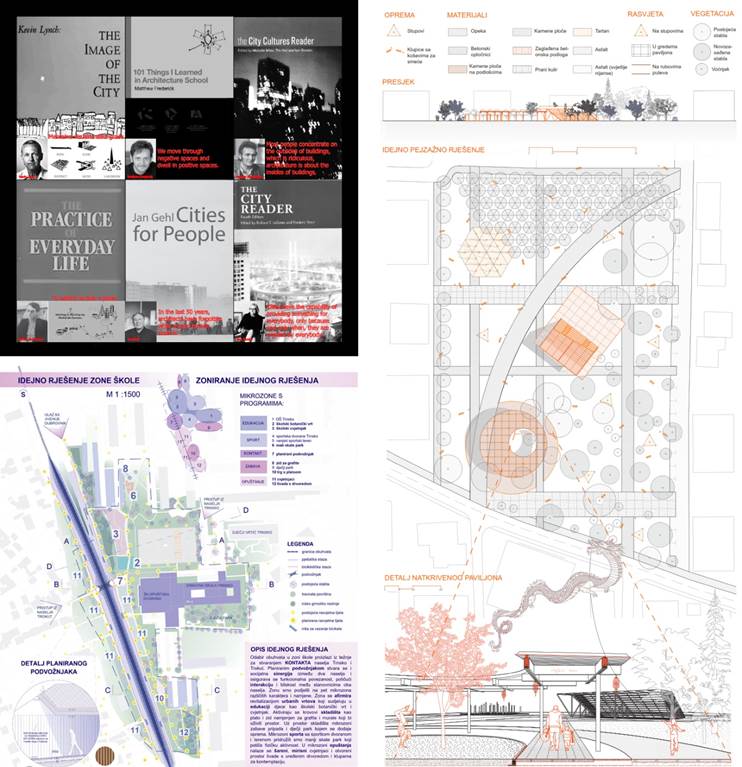
Figure 2
Results of multidisciplinary thematic blocks in student projects: A theoretical research (left top, authors: students Antonio Blaće and Karla Čavlović), B urban planning system of landscape public spaces (left bottom, authors: students Klara Ćurić and Dora Dawidowsky), C urban landscape solution for a public landscape space (right, authors: students Ivan Dujić and Ivan Duević).
Dissemination activities: exhibitions and conference participation
The dissemination of student projects has been a key component of the collaborative teaching approach (Table 4), showcasing the outcomes of interdisciplinary work in urban ecology and landscape architecture. Each year, student projects were exhibited both in conjunction with ongoing student assignments and as stand-alone events, offering local communities and wider audiences a chance to engage with the students' proposals.
Table 4
List of dissemination of student assignments and multidisciplinary teaching from 2021 until 2024 “Rethinking and (Re)Designing Open Public Spaces in New Zagreb Area”
|
|
|
|
|
|
|
|
| |
|
|
|
| |
|
|
|
| |
|
|
|
| |
|
|
|
| |
|
|
|
| |
|
| |||
| ||||
| ||||
A variety of dissemination activities were organized to promote the results of the projects, as reflected in Table 4. These included:
• Exhibitions with lectures: These exhibitions presented the final student proposals alongside lectures aimed at both students and the broader public. For example, a digital pop-up exhibition of student projects on the design of public spaces in Eastern New Zagreb (Zapruđe, Utrina, Travno, Dugave) took place in 2022, opening with presentations from teaching staff and guest speakers. Similarly, exhibitions focused on the Southern New Zagreb public space proposals (Utrina, Sopot, Siget, Trnsko) were held at key venues such as the Museum of Contemporary Art (MSU) in 2023, attracting interest from local communities, city government and the general public. These exhibitions emphasized the importance of community involvement in urban design, as local representatives played an active role in presenting the student projects.
• Community-organized exhibitions: Local communities also took the initiative to organize exhibitions that highlighted specific student projects of relevance to their neighbourhoods. These events served as a platform for engaging with residents, showcasing how student work addressed local needs and challenges in public spaces.
• Conferences and workshops: Teachers and students participated in various conferences, workshops, webinars, and symposia, where the results of the student projects were presented and discussed. These events allowed for critical exchanges of ideas, fostering a reflective process that informed future assignments. The multi- and interdisciplinary nature of the projects was highlighted in these forums, with contributions from urban planners, biologists, architects, and sociologists enriching the discussions and further advancing the interdisciplinary teaching approach.
In addition to the exhibitions and community engagements, the Science Fair 2024 (Festival Znanosti 22.–27.04.2024. at Technical Museum Nikola Tesla in Zagreb) featured student works from the Urban Ecology and Design Studio III – Landscape Architecture courses. This exhibition showcased the integration of urban design principles with biodiversity conservation in New Zagreb, underscoring the importance of interdisciplinary collaboration in creating sustainable urban environments.
These activities not only promoted the results of the student projects but also facilitated valuable dialogues between students, faculty, local communities, and professional networks. The exhibitions and conferences provided a platform for sharing knowledge, receiving feedback, and fostering continued collaboration across disciplines, contributing to the development of innovative solutions for public space design in New Zagreb.
Discussion
At the University of Zagreb, Croatia, an innovative interdisciplinary approach to teaching and learning about urban design and ecology has emerged through the collaborative efforts between the Faculty of Science (Department of Biology) and the Faculty of Architecture (Department of Urban Planning, Spatial Planning, and Landscape Architecture). This collaboration, which has been increasingly shaped since 2020, brings together students from both faculties to address the multifaceted challenges of urbanization, particularly in the context of sustainable public space design. Courses such as the elective course Urban Ecology at the Faculty of Science and compulsory course Design Studio III – Landscape Architecture at the Faculty of Architecture have become platforms for multidisciplinary, interdisciplinary and transdisciplinary teaching. These courses reimagine urban public spaces in Zagreb as multifunctional community systems of places that support the diverse needs of humans, other organisms, and the environment, thereby actively contributing to the achievementviews of the Sustainable Development Goals.Goals across countries. Nat Sustain, 2, 819–825. https://doi.org/10.1038/s41893-019-0365-4
TheBell, core aim of this work was to highlight how the collaboration between the two faculties has enabled students to engage in a comprehensive investigation of urban public spaces through project-based learningD. (cf. Guo et al., 2020)2016). TheTwenty-first outcomescentury ofeducation: studentTransformative projects not only exemplify the benefits of a multidisciplinary learning approach but also demonstrate the potentialeducation for evolving into a more integrated, interdisciplinary,sustainability and transdisciplinaryresponsible framework.citizenship. ThisJ. shiftTeach. emphasizesEduc. theSustain, need18, for collaborative education in addressing the urgent issues of sustainable urban development (Biberhofer & Rammel, 2017).48–56.
Biggs,
R.,EvolutionSchlüter, ofM. the& collaborativeSchoon, framework
TheL. collaboration(eds.) between(2015). thePrinciples twofor facultiesbuilding beganresilience: withsustaining aecosystem multidisciplinary teaching approach, where students from architecture and biology engaged with a shared theme of urban ecology but studied separately within their disciplines. This allowed students to develop expertiseservices in their respective fields while drawing on the shared theme to build connections between their knowledge. However, over time, this collaboration evolved into an interdisciplinary framework, with students working more closely across disciplines. Architecture students began exploring biodiversity and social-ecological concepts,systems. whileCambridge biology(UK): studentsCambridge examinedUniversity thePress. impact of urban design on ecosystems. This shift allowed students to learn simultaneously from multiple disciplines, creating a more integrated approach to problem-solving.http://dx.doi.org/10.1017/cbo9781316014240
LookingBunyan, ahead,N. the(2024). goalLearn isMore toAbout transitionEducation towardsfor aSustainable fullyDevelopment interdisciplinary(ESD). andLiverpool transdisciplinary(UK): model,University whereof studentsLiverpool, Centre for Innovation in Education. Retrieved on 25th May 2021, from varioushttps://www.imlab.ac.uk/media/livacuk/centre-for-innovation-in-education/diy-guides/learn-more-about-esd/learn-more-about-education-for-sustainable-development.pdf disciplines collaborate to address real-world urban ecology challenges (Biberhofer & Rammel, 2017). This approach goes beyond merely applying knowledge from different fields; it encourages students to collectively shape the learning process, integrating their diverse expertise to develop innovative solutions for complex urban problems (Biberhofer & Rammel, 2017). By fostering synergy and facilitating knowledge exchange, our collaborative educational model exemplifies how multi-, inter-, and interdisciplinary frameworks can address the multifaceted challenges of urban development, fostering the next generation of professionals equipped to tackle these issues in real-world settings.
Furthermore,Capra, multi-F. (2005). Speaking nature’s language: Principles for sustainability. In M. Stone, & Z. Barlow (Eds.), inter-Ecological literacy: Educating our children for a sustainable world (pp. 18–29). San Francisco: Sierra Club Books.
Corres, A., Ruiz-Mallén, I. & Rieckmann, M. (2024). Educators’ competences, motivations and transdisciplinaryteaching challenges faced in education for sustainable development: what are the interlinkages? Cogent Education, 11(1). https://doi.org/10.1080/2331186X.2024.2302408
EC (2021). Education for environmental sustainability: policies and approaches are essential in fosteringEuropean theUnion adoptionMember States: final report. Luxembourg: Publications Office of the European Union. https://data.europa.eu/doi/10.2766/391
Folke, C., Biggs, R., Norström, A. V., Reyers, B. & Rockström, J. (2016). Social-ecological resilience and biosphere-based sustainability agendascience. Ecology and Society, 21(3), 41. http://dx.doi.org/10.5751/ES-08748-210341
Green, C., Molloy, O. & Duggan, J. (2022). An Empirical Study of the Impact of Systems Thinking and Simulation on Sustainability Education. Sustainability, 14(1), 394. https://doi.org/10.3390/su14010394
IPCC (2022). Climate Change 2022: Impacts, Adaptation, and Vulnerability. In H. Pörtner, D Roberts, M Tignor, et al. (eds.), Contribution of Working Group II to the Sixth Assessment Report of the Intergovernmental Panel on Climate Change. Cambridge: Cambridge University Press. Retrieved on 19th October 2023, from https://www.ipcc.ch/report/ar6/wg2/
Jensen, B. B., Schnack, K. (1997). The action competence approach in environmental education. Environmental Education Research, 3(2), 163–178. https://doi.org/10.1080/1350462970030205
Jensen, B. B. (2002). Knowledge, Action and Pro-environmental behaviour. Environmental Education Research, 8(3), 325–334. https://doi.org/10.1080/13504620220145474
Kahle, L. R., Gurel-Atay, E. (2014). Communicating Sustainability for the Green Economy (1st ed.). Routledge. https://doi.org/10.4324/9781315705491
Laurie, R., Nonoyama-Tarumi, Y., Mckeown, R., Hopkins, C. (2016). Contributions of education for sustainable development (ESD) to quality education: A synthesis of research. J. Educ. Sustain. Dev., 10, 226–242.
Müller, U., Dawson, R. Hancock, T. S. & Wang, C. (2021). Implementing ESD in Schools: Perspectives of Principals in Germany, Macau, and the Water-Energy-FoodUSA. Sustainability, 13(17), 9823. https://doi.org/10.3390/su13179823
Orr, D. (WEF)1992). NexusEcological conceptliteracy: Education and the transition to a postmodern world. New York: State University of New York.
Orr, D. (2014). Systems thinking and the future of cities. Solutions, 5(1), 54–61. Retrieved on 17th February 2022, from http://www.resilience.org/stories/2014-05-30/systems-thinking-and-the-future-of-cities
Pavlova, M. (2013). Teaching and learning for sustainable development: ESD research in urbantechnology planningeducation. Int J Technol Des Educ, 23, 733–748. https://doi.org/10.1007/s10798-012-9213-9
Purković, D. (Sertić2022). PerićThe etimportance al.of technical and technological knowledge for the development of students' critical thinking. In Mrnjaus, K. (ed.), VIII. International European Congress on Social Sciences - Full Text Book (pp. 326 – 338). Rijeka: IKSAD, 2022.
Purković, D., Kovačević, S. & Runko Luttenberger, L. (2023). Attitudes of Croatian Pupils on the relationship of Environmental Issues and Sustainable Development with Technology and Engineering. International journal of technology and design education, 33(4), 1285-1307. https://doi-org/10.1007/s10798-022-09779-6
Purković, D. (2024). UrbanDemystifying areas, as key hubs for resource consumption, require designs that take into account not only WEF dimensions, but also broader ecological concerns and environmental and social dimensions, including climate change, land use, soil health, and biodiversity (Purwanto et al., 2021; Sertić Perić et al., 2024). This expanded framework, knownTechnology as the WEF+ Nexus, further reinforces the importanceBasis of architectureEducation andfor urban planning in urban ecology and biodiversity discussions (Sertić Perić et al., 2024)Sustainability. Moreover,IntechOpen. exploringhttps://doi.org/10.5772/intechopen.1004517 the relationship between urban design, spatial planning, and the WEF+ Nexus enables a deeper understanding of how cities can become more sustainable, resilient, and equitable in the face of contemporary challenges (Sertić Perić et al., 2024).
Purvis, B., Mao, Y. & Robinson, D. (2019). Three pillars of sustainability: in search of conceptual origins. Sustainability Science, 14(3), 681–695. https://doi.org/10.1007/s11625-018-0627-5
Multi-,QAA inter-(2021). andEducation transdisciplinaryfor collaborationSustainable enhancesDevelopment studentGuidance. projectGloucester quality(UK): andQAA; studentYork: engagementAdvance HE.
The collaborative student projects presented in this work focusedRetrieved on enhancing12th theJanuary public2024, spacesfrom ofhttps://www.qaa.ac.uk/docs/qaa/guidance/education-for-sustainable-development-guidance-executive-summary.pdf?sfvrsn=b121d281_8 various neighbourhoods in New Zagreb, an area in Croatian capital Zagreb undergoing rapid urban development. Over the years, the scope of these projects has expanded to address different themes, including Heritage Revitalization in Zapruđe, Utrina, Travno, and Dugave neighbourhoods, Community Spaces in Trnsko, Siget, Sopot, and Utrina neighbourhoods, and Slash City concept in Kajzerica, Lanište, Trnsko, and Savski Gaj/Trokut neighbourhoods. These projects aimed to reimagine urban spaces as sustainable and inclusive areas that support biodiversity, social integration, and community well-being.
ShapedRobertson, by the interdisciplinary collaboration between faculty membersM. (teaching2017). staffSustainability of both faculties)principles and guestpractice. lecturersNew fromYork: diverse fields – such as urban planning, design, landscape architecture, ecology, agriculture, environmental science, and the social sciences – the student projects addressed the complexities of urbanization. These included pressing issues such as biodiversity conservation, sustainable development, and social inclusion. The integration of various disciplines enabled students to develop holistic project development approach that balanced ecological, social, and design considerations, resulting in designing public spaces that address both human needs and ecosystem health. This approach aligns with the concerns raised by urban experts, such as urban ecologists, urban planners, and sustainability professionals, who emphasize its importance for enhancing the sustainability, resilience, and vividness of urban areas (Romero-Lankao et al., 2016). By engaging with these complex urban issues, students gain valuable insights into how urban planning and ecological knowledge can inform urban/spatial planning and policy decisions, ensuring that cities are both liveable and sustainable.Routledge.
TheScherak, integrationL. & Rieckmann, M. (2022). Development and Assessment of multipleESD disciplines,Competences: suchStaff as biology (ecology) and architecture, into urban design education has been shown to significantly increase student engagement (Biberhofer & Rammel, 2017). According to studies, students in interdisciplinary programs often report higher levels of motivation and satisfaction because they are given the freedom to explore a variety of perspectives and approaches (Beane, 1997; Vincent-Lancrin et al., 2019). Research shows that when students have the freedom to select their areas of focus, they are more likely to produce innovative and original work (Winner, 2013; Vincent-Lancrin et al., 2019). This aligns with our findingsTraining at the University of Zagreb, where students have shown a high level of independence in choosing their topic (project scope) and engagement in developing collaborative projects that incorporate ecological, social, and design perspectives. Allowing students to choose topics within the broad framework fosters ownership of their projects, deepening their connection to the material and enhancing the quality of their projects (Winner, 2013). This student-centred approach was thus reflected in the high-quality work of our students, who showed a high level of engagement, but also a comprehensive understanding of urban challenges and innovative solutions to urban challenges, as evident in their final projects. For example, the projects in the Design Studio III - Landscape Architecture course required both urban and architectural designs that addressed environmental complexity and urban ecology, resulting in students developing well-defined spaces that were thought through to the technical detail. Students were challenged to integrate multiple layers into their projects to create urban systems that promote spatial and social equity, and to design functional spaces — such as squares, parks, streets, and pavilions — that are responsive to emerging needs and are buildable.
Furthermore, according to Raelin (2008), multidisciplinary teaching environments enable students to appreciate the interconnectedness of various fields and to develop solutions that are more informed and nuanced.Vechta. In theP. caseVare, of our students, the integration of biology, urban planning, and landscape architecture in their projects allowed them to address urban public spaces in Zagreb as multifaceted systems that cater not only to human needs but also to the environment and other living organisms.
Finally, transdisciplinary education – where academic disciplines collaborate with real-world stakeholders – enhances the relevance and applicability of student work, particularly in addressing societal challenges. In transdisciplinary model, students are encouraged to work on projects that extend beyond traditional academic boundaries and engage directly with real-world issues. As some sources suggest (e.g., Budwig & Alexander, 2020; Regger et al., 2024), transdisciplinary learning encourages students to engage with problems in ways that are grounded in the complexities of society, making their learning more directly applicable to the challenges they will face in their careers. Our findings support this perspective, as students working on urban public space projects in Zagreb developed solutions that not only address ecological concerns but also consider social, cultural, and political dimensions, making their work highly relevant to sustainable urban development, addressing full complexity of urban challenges.
The continued collaboration between the Faculty of Science and the Faculty of Architecture is central to establishing this transdisciplinary framework in future courses, such as Urban Ecology and Design Studio III - Landscape Architecture. This model will deepen collaboration among students, helping them cultivate a shared understanding of how interdisciplinary knowledge can create sustainable and innovative solutions for urban environments. Through this approach, we aim to equip students with the skills and mindset necessary to navigate the complex urban challenges of the future, preparing them for careers in collaborative, interdisciplinary teams.
The role of teachers in fostering collaborative learning
Teachers play a critical role in shaping the interdisciplinary and transdisciplinary nature of courses by creating learning environments that encourage collaboration (Vincent-Lancrin et al., 2019). By collaborating across disciplines, teachers can model the integration of knowledge and provide students with unique opportunities to learn from diverse perspectives, i.e., joint teaching not only enriches the student experience but also bridges the gaps between academic disciplines, offering a more comprehensive educational approach (Budwig & Alexander, 2020; Regger et al., 2024). Our experience with the collaborative efforts between the Faculty of Science and the Faculty of Architecture at the University of Zagreb supports this finding. Student feedback collected through surveys, an integral part of the teaching evaluation process at the University of Zagreb, further reinforces this. In the survey, students expressed that the integration of different disciplines and topics, along with collaborative work with peers and faculty from other disciplines, made the lessons more engaging, enjoyable, and intellectually stimulating. They also noted that this broader perspective helped to fill gaps often found within their own specific fields of study. Additionally, students expressed pride in presenting their work at joint seminars and exhibitions, viewing these events as valuable opportunities to showcase their efforts and celebrate the collaboration between faculties.
Conclusions
In conclusion, the interdisciplinary collaboration between the Faculty of Science and the Faculty of Architecture at the University of Zagreb has proven to be a successful model for addressing the complexities of urban public space design. By integrating ecological, social, and design perspectives, students are empowered to create sustainable, inclusive, and innovative urban environments. As this collaboration continues to evolve toward a transdisciplinary model, it will better prepare students to tackle the challenges of sustainable urban development, equipping them with the skills and mindset necessary for addressing complex real-world problems.
The courses and workshops that adopt a multidisciplinary and participative pedagogical approach to urban design and landscape architecture play a key role in rethinking public spaces. These educational platforms help students engage with complex, locally specific, and socially sensitive issues, developing innovative planning strategies for the (re)design of urban spaces. By blending theory and practice, they provide students with the skills needed to address contemporary urban challenges, while fostering a deep understanding of the interconnectedness between urban development, ecological sustainability, and community well-being. Ultimately, this collaborative approach not only enhances student learning but also contributes to the creation of more sustainable, inclusive, and resilient urban environments.
The outcomes of student projects highlight the advantages of a multidisciplinary learning approach and demonstrate the potential for evolving into a more integrated, interdisciplinary, and transdisciplinary framework. This shift emphasizes the critical need for collaborative education in addressing the urgent issues of sustainable urban development.
Looking ahead, the goal is to transition to a fully transdisciplinary model where students from diverse disciplines collaborate to tackle real-world urban ecology challenges. This model encourages students to go beyond merely applying knowledge from various fields, instead collectively shaping the learning process and integrating their expertise to create innovative solutions for complex urban problems.
Exhibitions and events organized during the course create spaces for dialogue within the academic community and beyond, helping to shape the future of urban design. These platforms not only celebrate the students' work but also facilitate ongoing conversations about the evolving role of urban design in creating more sustainable and resilient cities.
Acknowledgements
We wish to thank all mentors and lecturers who together with authors of this paper participated in workshops at the Faculty of Architecture – professors: Damir Krajnik, PhD, Sanja Gašparović, PhD, Ivan Mlinar, PhD, Vedran Ivanković, PhD, Ana Mrđa, PhD, Marko Rukavina, PhD, Alen Žunić, PhD, Marija Premužić Ančić, PhD; assistants: Kristina Perkov, Marin Duić and Ines Mravunac; together with professors who participated in lectures: Jana Vukić, PhD (Faculty of Human Sciences), Sanja Bencetić and Ivana Fabrio (Design studies at the Faculty of Architecture), Tihomir Jukić, PhD, Zlatko Karač, PhD, Damir Krajnik, PhD, and Alen Kostrenčić (Faculty of Architecture).
References
Beane, J. A. (1997). Curriculum Integration: Designing the Core of Democratic Education. Teachers College Press.
Biberhofer P, & Rammel C (2017). Transdisciplinary learning and teaching as answers to urban sustainability challenges. International Journal of Sustainability in Higher Education, 18(1): 63–83.
Budwig,Lausselet, N., & Alexander, AJ. (2020). A Transdisciplinary Approach to Student Learning and Development in University Settings. Front Psychol. 11:576250. doi: 10.3389/fpsyg.2020.576250. PMID: 33178078; PMCID: PMC7594518.
CIHR - Canadian Institutes of Health Research (2005). Training Program Grant Guide: Strategic Training Initiative in Health Research. Ottawa: CIHR.
Creutzig, F., Urge-Vorsatz, D., Takeuch, K., Zusman, E., Aderinto, I., Sörgel, B., Ortiz Moya, F., Kumer Mitra, B., Sukhwani, V., & Salehi, P. (2024). Seeking Synergy Solutions: How Cities can Act on Both Climate and the SDGs. Expert Group on Climate and SDG Synergy. Retrieved on 10th January 2025, from https://sdgs.un.org/basic-page/seeking-synergy-solutions-four-thematic-reports-55697
Elmqvist, T., Redman, C. E., Barthel, S., & Costanza, R. (2013). History of urbanization and the missing ecology. In Elmqvist, T., Fragkias,Rieckmann, M., Goodness, J., Güneralp, B., Marcotullio, P. J., McDonald, R. I., & Wilkinson, C. (Eds.), Urbanization, Biodiversity and Ecosystem Services: Challenges and Opportunities (pp. 13–30). Cham: Springer. doi:10.1007/978-94-007-7088-1_2
Guo, P., Saab, N., Post, L.S., & Admiraal, W. (2020). A review of project-based learning in higher education: Student outcomes and measures. International Journal of Educational Research, 102, 101586. https://doi.org/10.1016/j.ijer.2020.101586.
Karaman, Z. (2022). An Understanding of Inter and Transdisciplinary Aspects of Urban Resilience. Open Journal of Social Sciences, 10, 195-215. doi: 10.4236/jss.2022.104014.
Laszowski, E. (1994). Stari i novi Zagreb. Zagreb: Školska knjiga.
Lehmann, S. (2010). The principles of green urbanism: transforming the city for sustainability. London: Earthscan.
McPhearson, T., Karki, M., Herzog, C., Santiago Fink, H., Abbadie, L., Kremer, P., Clark, C. M., Palmer, M. I., & Perini, K. (2018). Urban ecosystems and biodiversity. In Rosenzweig, C., W. Solecki, P. Romero-Lankao, S. Mehrotra, S. Dhakal, & S. Ali Ibrahim (Eds.), Climate Change and Cities: Second Assessment Report of the Urban Climate Change Research Network (pp. 257–318). New York: Cambridge University Press.
Millennium Ecosystem Assessment (2005). Ecosystems and human well-being: Synthesis. Washington, DC: Island Press.
Mlinar, I., & Klasić, H. (2021). Zagreb Većeslava Holjevca od 1952. do 1963. – urbanistička vizija i arhitektonski dosezi. Zagreb: Muzej suvremene umjetnosti.
NSERC - Natural Sciences and Engineering Research Council of Canada (2004). Guidelines for the Preparation and Review of Applications in Interdisciplinary Research. Ottawa: NSERC.
Park, J. Y., & Son, J. B. (2010). Transitioning toward Transdisciplinary Learning in a Multidisciplinary Environment. International Journal of Pedagogies and Learning, 6(1), 82–93. https://doi.org/10.5172/ijpl.6.1.82
Purwanto, A., Sušnik, J., Suryadi, F.X., & de Fraiture, C. (2021). Water-Energy-Food Nexus: Critical Review, Practical Applications, and Prospects for Future Research. Sustainability, 13, 1919. https://doi.org/10.3390/su13041919
Raelin, J. A. (2008). Work-based Learning: Bridging Knowledge and Action in the Workplace. John Wiley & Sons.
Regeer, B.J., Klaassen, P., & Broerse, J.E.W. (2024). What Is That Thing Called ‘Transdisciplinarity for Transformation’?. In: Regeer, B.J., Klaassen, P., Broerse, J.E.W. (Eds) Transdisciplinarity for Transformation. Cham: Palgrave Macmillan. https://doi.org/10.1007/978-3-031-60974-9_1
Rieckmann, M. (2018). Learning to transform the world: key competencesCompetences in education for sustainable development. Issues Trends Educ. Sustain. Dev., 39, 39–59.
Romero-Lankao, P., Gnatz, D.M., Wilhelmi, O., & Hayden, M. (2016). Urban Sustainability and Resilience: From Theory to Practice. Sustainability, 8, 1224. https://doi.org/10.3390/su8121224
Sachs, J. D. (2015). The Age of Sustainable Development.development Newgoals York: Columbia University Press.
Scholz, R.W., Lang, D.J., Wiek, A., Walter, A.I., & Stauffacher, M. (2006) Transdisciplinary case studies as a means of sustainability learning. Historical framework and theory. Int J Sustain High Educ, 7, pp. 226-251.
Sertić Perić, M., Zaninović, T. & Sopina, A. (2024). Collaborative student assignments: Urban planning and ecology in Nexus-aware public spaces. Nexus Implementation: Potential and Opportunities workshop. Available info (from 19th January 2025) https://unu.edu/flores/workshop/nexus-implementation-potential-and-opportunities
Soskolne, C. (2000). Transdisciplinary approaches for public health. Epidemiology, 11:S122.
UNCTAD (2023). Handbook of Statistics 2023. Retrieved on 29th December 2024, from https://unctad.org/publication/handbook-statistics-2023
Vincent-Lancrin, S., González-Sancho, C., Bouckaert M., de Luca, F., Fernández-Barrerra, M., Jacotin, G., Vidal, J. U, & Vidal Q. (2019). Fostering Students' Creativity and Critical Thinking: What it Means in School, Educational Research and Innovation. Paris: OECD Publishing. https://doi.org/10.1787/62212c37-en
Winner, W.E. (2013). Choosing Topics. In: A Handbook for Analytical Writing. Synthesis Lectures on Professionalism and Career Advancement for Scientists and Engineersseries (pp. 21-28)121–128). Cham: Springer. https://doi.org/10.1007/978-3-031-02507-5_4030-91055-6_15
Sterling, S. (2001). Sustainable education: Re-visioning learning and change. Bristol: Green Books.
Sterling, S. (2010). Learning for resilience, or the resilient learner? Towards a necessary reconciliation in a paradigm of sustainable education. Environmental Education Research, 16(5-6), 511-528. https://doi.org/10.1080/13504622.2010.505427
Tilbury, D. & Wortman, D. (2008). How is community education contributing to sustainability in practice? Applied Environmental Education and Communication, 7(3), 83-93. https://doi.org/10.1080/15330150802502171
UN (2015). Transforming Our World: The 2030 Agenda for Sustainable Development. A/RES/70/1. Retrieved on 11th April 2021, from https://sdgs.un.org/publications/transforming-our-world-2030-agenda-sustainable-development-17981
UN-ADB-UNDP (2018). Transformation towards sustainable and resilient societies in Asia and the Pacific: Theme report for the Asia-Pacific Forum on Sustainable Development, 2018. Bangkok, Thailand: United Nations. http://dx.doi.org/10.22617/TCS189274-2
UNESCO (2005). The DESD at a Glance. Paris: UNESCO. Retrieved on 21th January 2022, from http://unesdoc.unesco.org/images/0014/001416/141629e.pdf
UNESCO (2009). Bonn Declaration of the World Conference on Education for Sustainable Development. Paris: UNESCO. Retrieved on 18th April 2020, from http://www.esd-world-conference-2009.org/fileadmin/download/ESD2009_Bonn Declaration080409.pdf
UNESCO (2012). Shaping the Education of Tomorrow – Abridged Version. Paris: UNESCO. Retrieved on 18th February 2021, from http://unesdoc.unesco.org/images/0021/002166/216606e.pdf
UNESCO (2017). Education for Sustainable Development Goals: learning objectives. Collectivité auteur: UNESCO. ISBN: 978-92-3-100209-0. Retrieved on 18th February 2021, from https://unesdoc.unesco.org/ark:/48223/pf0000247444
UNESCO (2014). Roadmap for Implementing the Global Action Programme on Education for Sustainable Development. Retrieved on 22th February 2021, from https://sustainabledevelopment.un.org/index.php?page=view&type=400&nr=1674&menu=35
UNESCO-DESD (2014). Shaping the Future We Want: UN Decade of Education for Sustainable Development (2005-2014) – FINAL REPORT. Retrieved on 15th February 2021, from https://unesdoc.unesco.org/ark:/48223/pf0000230171
Uzzell, D. & Räthzel, N. (2009). Transforming environmental psychology. Journal of Environmental Psychology, 29(3), 340-350. https://doi.org/10.1016/j.jenvp.2008.11.005
Vukobratović, J. & Rončević, N. (2020). Odgoj i obrazovanje za održivi razvoj kao obrazovni imperativ nastavničke profesije: „Od bilo kakvih materijala važniji je osobni primjer”. In: Ćulum Ilić, B. & Buchberger, I. (eds.) SUVREMENI TRENDOVI I IZAZOVI NASTAVNIČKE PROFESIJE Zbornik Odsjeka za pedagogiju Filozofskog fakulteta Sveučilišta u Rijeci. Rijeka: University of Rijeka, Faculty of Humanities and Social Sciences, 95-116. Retrieved on 23th February 2021, from http://izdavastvo.ffri.hr/wp-content/uploads/2020/05/Pedagogija_Zbornik_Suvremeni-trendovi-i-izazovi-nastavnicke-profesije_FINAL_Online_izdanje.pdf
Warner, B. & Elser, M. (2015). How do sustainable schools integrate sustainability education? An assessment of certified sustainable K-12 schools in the United States. The Journal of Environmental Education, 46, 1–22. https://doi.org/10.1080/00958964.2014.953020
|
Odgoj danas za sutra: Premošćivanje jaza između učionice i realnosti 3. međunarodna znanstvena i umjetnička konferencija Učiteljskoga fakulteta Sveučilišta u Zagrebu Suvremene teme u odgoju i obrazovanju – STOO4 u suradnji s Hrvatskom akademijom znanosti i umjetnosti |
|
Sažetak |
|
|
|
Ključne riječi: |
|
|


